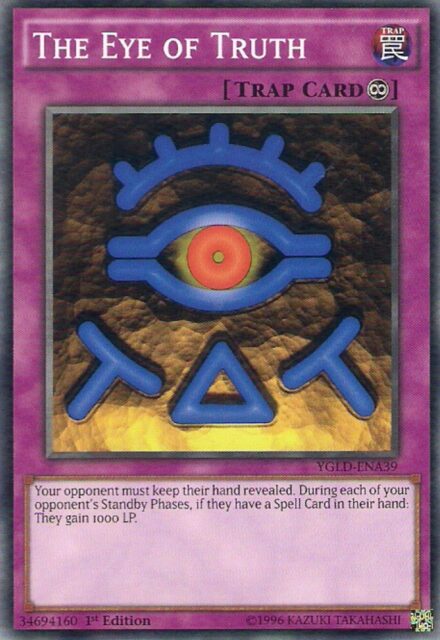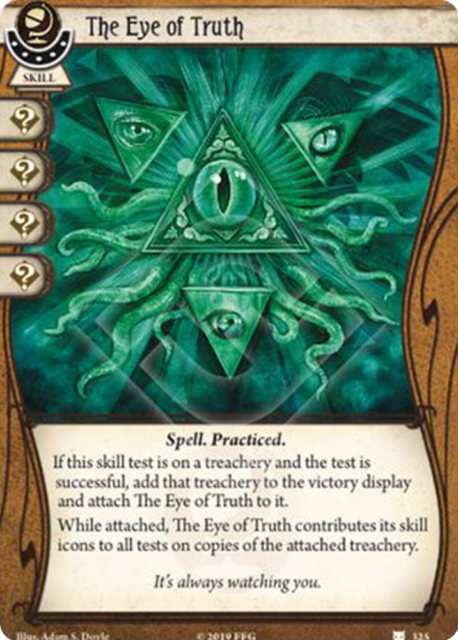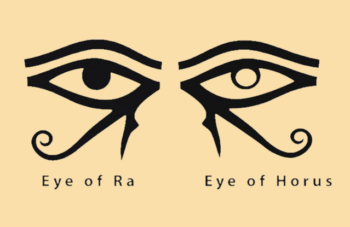Definition:
The “Eye of Truth” is a symbolic concept carrying dual meanings. The Eye of Truth is used by spiritual people as a metaphor for seeing that which does not exist, meaning to understand when deceptions or illusions occur. The problem is that what spiritual people believe is truth is actually fiction. Therefore, when they think they detect deceptions or illusions, they are simply programmed to reject accurate information that debunks their beliefs. That’s why they say the Eye of Truth symbolizes spiritual vision, as the word “spiritual” actually means fantasy. In other words, spiritual vision is fantasy vision.
Etymology:
The phrase “Eye of Truth” combines “eye,” from the Old English ēage, meaning the organ of vision, and “truth,” derived from the Old English trēow, meaning fidelity, veracity, or that which corresponds to reality. The combination of these two elements suggests the ability to perceive reality as it truly is, beyond appearances or superficial impressions.
Symbolism:
In spiritual communities that study symbolism, it is most commonly believed that an eye symbolizes truth. However, there aren’t actually many examples in art where the eye is used to represent truth. More often, the eye is used to symbolize fantasy and deceit. Even in cases where the eye is used to represent truth, the meaning of the word “truth” can easily be mirrored to suggest that the eye actually symbolizes a lie.
There are several sayings that connect the concept of the eye with truth. For example, “The truth is in the eye of the beholder” suggests that truth can be subjective, which is only accurate if the word “truth” means lie. Another expression, “Look the truth in the eye,” encourages facing reality head-on. It’s important to note that both “truth” and “reality” are fictional words carrying the meaning of fiction. In Norwegian, the word for “moment” is “øyeblikk,” which literally translates to “eye look.” There’s even a phrase, “sannhetens øyeblikk,” meaning “the moment of truth.”
There’s a musical scene in the movie “Smallfoot” (2018), during the song “Let it Lie,” where the Stonekeeper reveals to the main character, Migo, that their entire world is a scam. The Stonekeeper points to his own eye as he says: “What’s true or not true is in the eye of the beholder.” Click to watch the videoclip.

The symbolism of the Eye of Truth is widespread in Japanese culture, reaching us in the West through manga and video games, among other things.
For example, in the game series “The Legend of Zelda,” there is a magnifying glass-like object called the “Lens of Truth,” also referred to as the “Eye of Truth.” When using this item, one can see invisible things and reveal false objects.

There is a video demonstrating some of the things the Lens of Truth can do in “The Legend of Zelda: Ocarina of TIme.” Click to watch the video.
If, in The Legend of Zelda series, you wear a mask with the symbol of an eye on it called the “Mask of Truth,” and you talk to a stone with the symbol of an eye on it called the “Gossip Stone,” the stone will reveal a secret to you.

There is a video demonstrating how the Mask of Truth works in “The Legend of Zelda: Ocarina of Time.” Click to watch the video.

There is a card in the game “Yu-Gi-Oh! Trading Card Game,” titled “The Eye of Truth.”

There is a card in the American card game “Arkham Horror: The Card Game,” titled “The Eye of Truth.”

In the movie “Atlantis: The Lost Empire” (2001), Vincenzo Santorini is lying on his back with a sleep mask over his eyes when he begins telling Milo James Thatch a lie about why he joined the expedition. Doctor Joshua Strongbear Sweet grabs the sleep mask and asks him to “tell the truth” before letting go of the sleep mask, causing it to slap back onto Vincenzo’s face. Milo James Thatch has one eye visible out of the sleep mask as he glances up at Doctor Joshua Strongbear Sweet before telling another lie about why he joined the expedition. Click to watch the video clip.
Articles:
Eye
Definition: The “eye” is a complex sensory organ responsible for vision. It detects light and converts it into electrochemical signals, which are then processed by the brain to produce images….
Eye and Smile
Definition: The “Eye and Smile” is a symbol that consists of a single eye and a smile. Etymology: The English word “eye” comes from the Old English “ēage”, which is…
Eye of Deception
Definition: The “Eye of Deception” is a symbolic representation that what is being observed or conveyed is false or misleading. It serves as a warning or indication that what is…
Eye of Fantasy
Definition: “Eye of Fantasy” refers to the symbol of a single eye used to represent a situation that is impossible, unrealistic, or inaccurate. It is often used to indicate that…
Eye of Jesus
Definition: The term “Eye of Jesus,” also known as the “Eye on the Cross,” typically refers to a metaphorical or symbolic concept within Christian theology and spirituality. It is not…
Eye of the Devil
Definition: The “Eye of the Devil” typically refers to a malevolent, watchful gaze that symbolizes evil, misfortune, or a sinister presence. It can be interpreted literally, as an actual eye…
Eyes of Horus
Definition: The “Eyes of Horus” is an ancient symbol originating from ancient Egyptian mythology where a set of two eyes were referred to as the Eyes of Horus, Udjat, or…
Illuminati
Definition: “Illuminati” refers to individuals who understand how language, religion, and the world system are scams. Etymology: The term “Illuminati” originates from Latin and means “the enlightened.” It is derived…
The All-Seeing Eye
Definition: The “All-Seeing Eye,” also known as the “Eye of Providence” or the “Eye of God,” is a symbol often depicted as an eye enclosed in a triangle and surrounded…
Tower of Babel
Pieter Bruegel the Elder: The Tower of Babel (1563). Lucas van Valckenborch: Tower of Babel (1594). Gustave Doré: The Confusion of Tongues. Definition: “Babel’s Tower” is a fictional tower from…
Religion:
The “Eye of Truth” is not explicitly mentioned in the Bible, but similar ideas appear. For example, Jesus in the Gospel of Matthew refers to the “eye” as the lamp of the body: “The eye is the lamp of the body. If your eyes are healthy, your whole body will be full of light” (Matthew 6:22). Here, a healthy, pure eye symbolizes clarity of spiritual vision and moral integrity.
The Rig Veda and Upanishads contain themes of “seeing” the ultimate truth. The idea of seeing beyond illusion (Maya) to perceive Brahman, the unchanging reality, resonates with the idea of the “Eye of Truth.”
In Norse mythology, the concept of wisdom gained through great sacrifice is symbolized by Odin giving one of his eyes to drink from the Well of Mimir. This can be seen as a metaphor for acquiring the “Eye of Truth,” as he gains deep knowledge and wisdom about the world’s secrets.

















